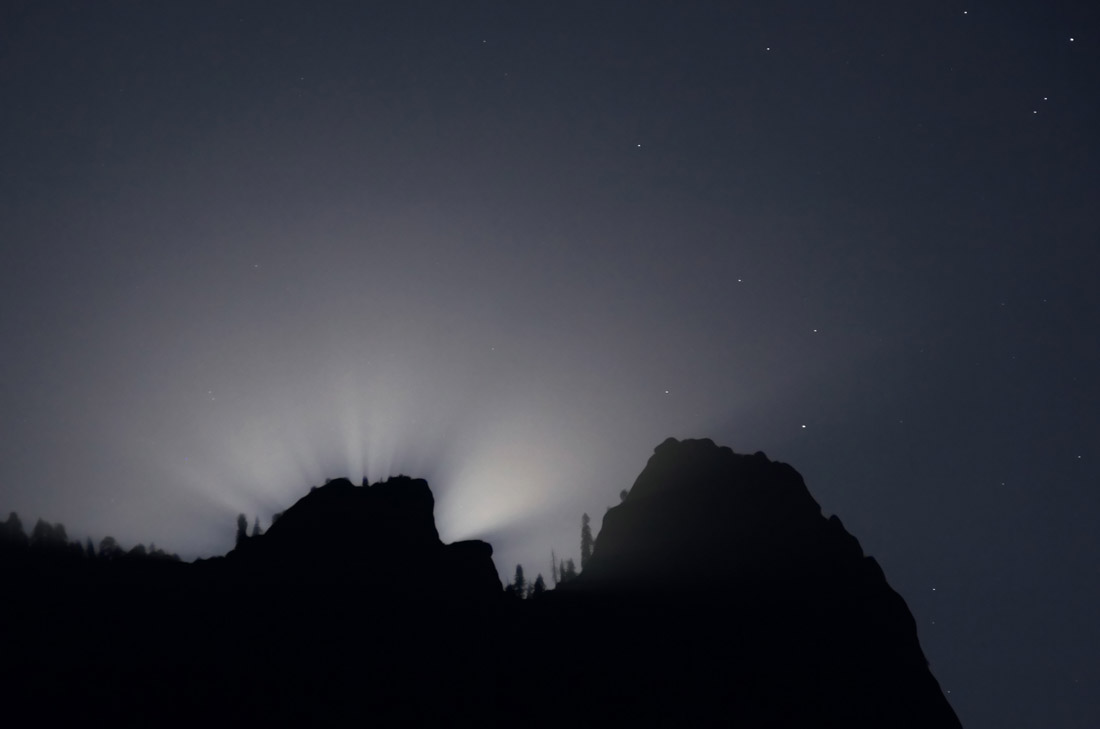June 1, 2008
Another Kind of Lunar Rays

image by Mila Zinkova
An LPOD without a Moon. But evidence for the Moon is provided by streamers of Moonlight passing around obstacles on a Yosemite National Park hillside. The light is visible because of aerosols, dust and other particles in the atmosphere. Such crepuscular rays would not exist on the atmosphereless Moon, unless the putative electrostatically levitated dust could provide particles to map out light from the source - presumably the Sun or the Earth. I love the exotic feeling of this image. Has anyone else captured lunar crepuscular rays?
Chuck Wood
Technical Details
21 May 2008. 70 mm lens, 6 second exposure. Yosemite.
Related Links
Mila's beautiful website
Yesterday's LPOD: Oppie
Tomorrow's LPOD: An Oblique View of Prom. Laplace
COMMENTS
(1) Wonderful photograph!
Imagine how the rays would look like if the lightsource was a bright point-like Supernova instead of the disc-like Full Moon.
P.S.;
A supernova could create optical effects which are much more spectral-colored (iridescent clouds, halo-phenomena, rainbow- and glory effects, etc...) and there would be a continuous appearance of "wriggling shadows" (related to Schlieren-optics) on every surface which is illuminated by that pointlike lightsource! (note: all of this could have been a whole new chapter in Minnaert's Light and Color in the Outdoors).
-- Danny Caes.
COMMENTS?
Register, Log in, and join in the comments.



